From bento boxes and bento dishes to food safety, here are my answers to your frequently asked questions about bento making.
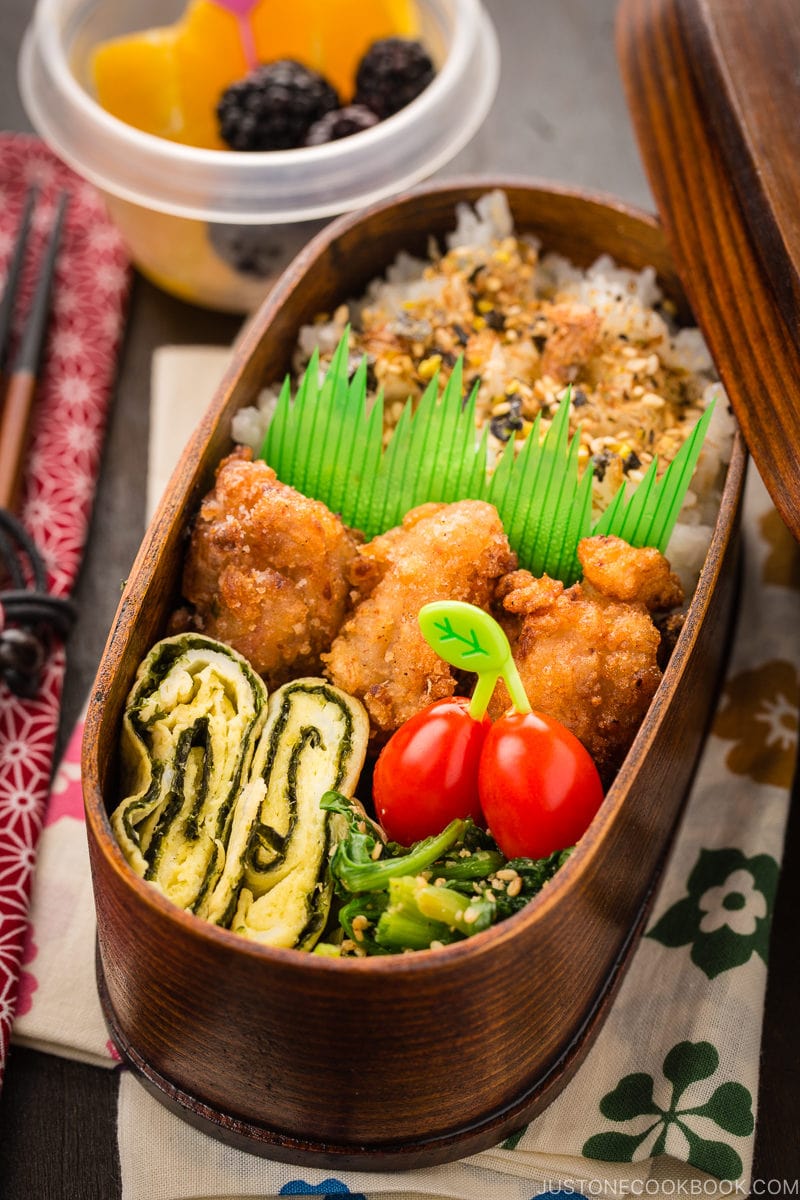
Bento – The Quintessential Japanese Lunch Boxes
Bento (弁当 bentō) or obento (お弁当 obentō) refers to a home-packed meal or takeout food presented and packed in a compartmentalized lunch box.
Many non-Japanese are familiar with the term “bento” and are starting to pack their lunches in bento-style containers. However, I often get asked questions regarding the type of food to pack, how to make the bento appealing, food safety, tips to save time, etc. Some readers express their struggles in packing Japanese-style bento because it seems to be too time-consuming.
So, I’ve compiled all the FAQs and provided my answers and guidance below:
Frequently Asked Questions by Readers
Q: Do I need to pack Japanese food for my bento? What do I pack?
No, you don’t have to pack Japanese food. I pack Japanese food because that’s what I cook every day. Even though bento is designed for the Japanese meal format, you can still apply the same formula to whatever food or cuisine you make at home. A good bento follows three key ideas: nutritious, colorful, and well-portioned. As long as you keep these in mind, you can pack the food you typically make at home.
Q: How do I make bento?
I have written 2 guides on how to pack bento. You can find all the information in the posts:
Q: Is bento making time-consuming?
Well, it depends on how you want to prepare it. A lot of my friends in Japan wake up early to make lunch for their husbands and kids. But I don’t, and this is how I pack bento in 15 minutes. As I wrote in the post, I rely heavily on my frozen, meal-prepped dishes and leftover foods from the previous day. It’s pretty quick to reheat the food or pack frozen food into the bento box. Occasionally, I allow myself to cook only one dish in the morning to keep the routine stress-free.
Q: When do I prepare it? Can I make it the night before?
I recommend preparing bento on the morning of the day you plan to eat it because some foods can lose texture if left overnight in the refrigerator, and it’s not ideal for food safety. If most of the food is prepared the night before, you can simply reheat it in the morning, which should take no more than 15 minutes. Prepare the bento before breakfast, and let it cool down (for food safety) while you eat breakfast. Once you get the hang of it, it’s very simple.
However, if you cannot spare 15 minutes in the morning, you can prepare the bento at night and keep it cool until lunchtime. Just before lunch, reheat the bento using a microwave oven. If reheating isn’t an option, pack foods that can be kept cool throughout the day and still be enjoyable at a cool temperature.
Q: How do you make the hot foods hot and cold foods cold?
Use an insulated food container, such as a thermal lunch box, to keep hot foods hot. Include one or two ice packs into your lunch bag to keep cold food cold.
Q: Do we eat bento cold or at room temperature?
Traditionally, Japanese bento is sold or eaten at room temperature. We choose the menus by considering what foods taste better at room temperature.
For instance, food soaked in an oily sauce doesn’t taste as good when the oil solidifies. Surprisingly, deep-fried foods can still be enjoyable if reheated in the morning until crispy in an oven or toaster oven, then cooled completely before closing the bento box lid.
Each person has their own preferences regarding which foods are acceptable at room temperature, so you may want to experiment and decide for yourself.
However, bacteria thrive on moisture and protein at room temperature. If you’re unfamiliar with this topic, please read my post “Food Safety Tips for Bento.” Remember the three key points: thoroughly reheat, let cool completely, and keep cool with ice packs until mealtime.
If you have access to a microwave oven, pack foods meant to be eaten warm separately in a microwave-safe container to avoid reheating salads or fruits.
Q: Any tips for making nutritious and exciting bento for elementary school kids?
I have a few tips based on my own experience:
- Prepare 5 types of food – Read this post where I discuss this with examples, keeping nutrition in mind!
- Work with rainbow colors – Using rainbow colors is an easy way to ensure a variety of healthy foods in their bento. If there are too many brown dishes, it might be time for a color check.
- Make the bento colorful and cheerful! – Picky eaters are more likely to try foods when they’re presented in a fun and appealing way. A cute, colorful bento always grabs more attention than a dull one. Start with simple food art like apple bunny, ham flower, and octopus sausage, or piggy spam musubi to catch their interest. You can also use cute food picks!
- Don’t overpack their lunch – Children love showing an empty bento box when they return home, especially when Mom asks, “How was lunch?” To encourage them to eat everything, avoid overpacking. My children have just 30 minutes for lunch and playtime (with about 10 minutes for actual eating). They prefer playing with friends, so I pack smaller portions compared to what they’d eat at home. I include healthy snacks and fruits for after-school activities to complement their smaller lunch portion.
- Try one food at a time – If your children are picky eaters and reluctant to eat lunch, take it easy. Start with one dish and gradually increase the portion (with praise when they finish!). If they’re hungry, they’re more likely to eat what you’ve packed. It’s about creating interest and developing a palate for a variety of foods.
Q: How do I pack bento for the older generation?
Japanese bento is for all ages. While there isn’t a special meal exclusively for the older generation, in my experience, they tend to prefer softer-textured foods and traditional Japanese dishes, such as grilled fish rather than deep-fried foods.
Q: What Japanese dishes go well together?
This is a bit of a hard question to answer. Simply speaking, any dish would go well together as long as you pack similar type of food in the box—be it washoku (traditional Japanese food), yoshoku (western-influenced Japanese food), or chuka ryori (Chinese Japanese food). It often comes to down personal preferences, so you can definitely mix and match your dishes.
This can be a bit of a difficult question to answer. Generally speaking, any dishes will complement each other as long as you pack foods of similar types in the box—whether it’s washoku (traditional Japanese food), yoshoku (western-influenced Japanese food), or chuka ryori (Chinese Japanese food). It often comes down to personal preferences, so feel free to mix and match your dishes.
For examples:
- Spaghetti Meat Sauce (yoshoku) + Green Bean Gomaae (washoku)🙅🏻♀️
- Grilled Mackerel (washoku) + Cucumber Salad (washoku) 🙆🏻♀️
- Japanese Croquette (yoshoku) + Spinach Namul (Korean) 🙆🏻♀️
- Gyoza (chuka ryori) + Macaroni Salad (yoshoku) 🙅🏻♀️
- Meat Doria (yoshoku) + Harusame Salad (chuka ryori) 🙅🏻♀️
Some of these combinations can be delicious too!
Q: Do we need to worry about different textures and flavors in the bento?
Eating foods with different textures and flavors can enhance appetite. If the main dish is seasoned with a soy sauce base, consider avoiding similar-flavored dishes and go for refreshing vegetables instead.
Additionally, remember that foods at room temperature often taste better when they are more flavorful. Consider adding extra seasoning to the bento ingredients or concentrating the sauce before adding it to the bento.
However, the choice is entirely up to you. There are no strict rules regarding textures and flavors when packing a bento.
Q: How do you make budget-friendly bento?
Whether it’s bento or a regular meal, planning ahead can help minimize food waste. If you buy a head of cabbage, for example, make sure you can use it in multiple dishes throughout the week rather than for just one.
I have a blog post titled “How to Meal Prep Bento: $3 Bento Challenge,” where I meal-prepped and made three types of bento for under $3 each.
Q: How do you keep the bento safe in hot weather?
Assuming that the backpack or lunch bag is kept outdoors until lunchtime, it’s a good idea to invest in an insulated lunch bag like this or this and pack ice packs for the bento to remain cool.
I hope I’ve answered your questions. If yours is not covered, leave a comment below, and I’ll try to answer in the post!
Wish to learn more about Japanese cooking? Sign up for our free newsletter to receive cooking tips & recipe updates! And stay in touch with me on Facebook, Pinterest, YouTube, and Instagram.
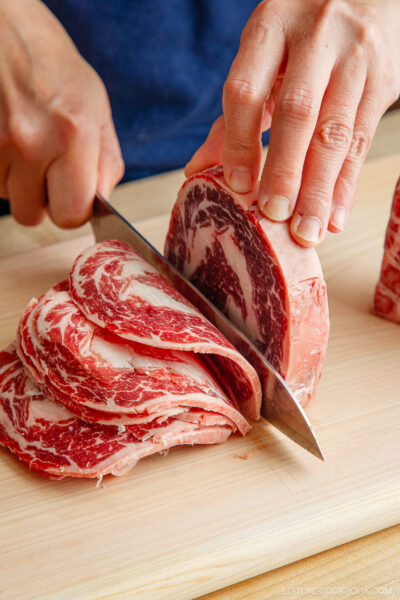
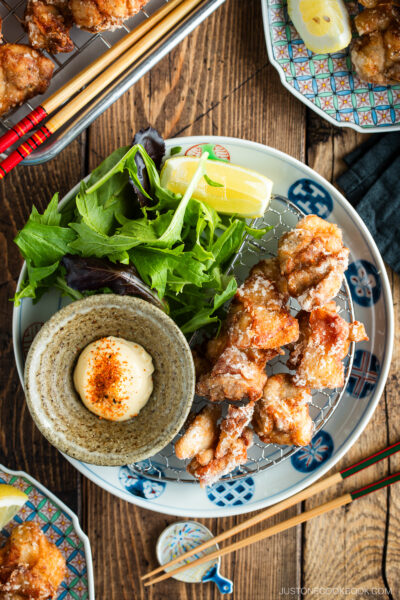
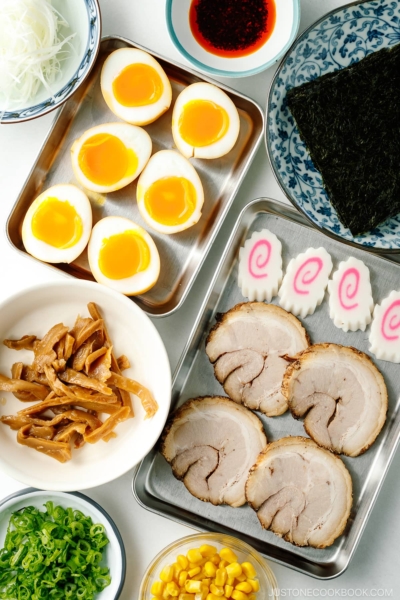
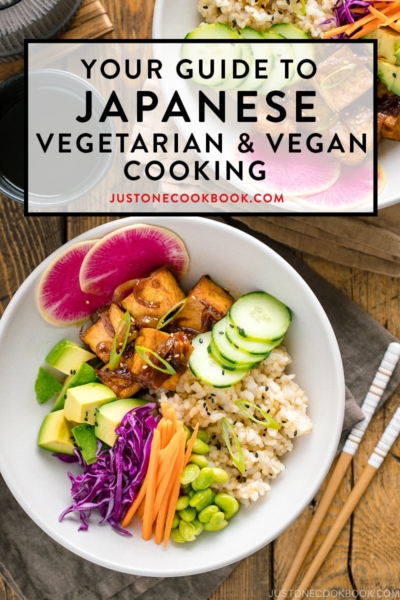




i love your website so much – recently started on my japanese cooking adventure and your website is SO helpful! everything you need to know is pretty much in here! amazing! thank you for all that you do and for sharing all this information
Hi quinn, Thank you very much for your kind feedback! We are glad to hear you enjoy our website and cooking more Japanese foods! Thank you for trying many recipes.☺️
I forgot and I could locate the article , on what order of food goes into a 3 tiered bento box, does the hot food go bottom right?
Hi Angela! Usually, the bottom is carb (heavy) like rice or noodles. Then middle can be the main dishes, and the top can be fruits and light dishes. 🙂 In general, bento should be eaten at room temperature and there should not be “hot food” in the box because it will create condensation that leads to bacteria growth. We eat everything at room temperature when it’s served in a bento box. 🙂
How do you meal prep for bentos? I’m trying to use your recipes but my biggest issue is trying to figure out what groceries to buy on the weekends. I would like to be able to buy groceries that I can use for multiple meals/dishes but not sure how.
Thanks!
Hi Bell! In Japan, we use meal pre all the side and main dishes ahead of time and then assemble every morning. I try to show that in this post.
https://www.justonecookbook.com/meal-prep-3-dollar-bento-challenge/
The key is to make a lot of side dishes that you want to add ahead of time. And just pick and choose (like a buffet) to make each bento.
Some meal prep can be frozen so you need to reheat, too in the morning.
It might be a good idea to write down what you want to put in the bento. 🙂
Not quite sure the best place to post this question, but bento FAQ seems as good a place as any!
I notice that some of your bento pictures sport beautifully glossy soft-cooked egg. In regards food safety, what do you recommend for children’s school lunches? Occasionally, my daughter loves the yolkiness of a soft-cooked egg, but I worry about the time stability. I do not have a grocer that sells pasteurized eggs, but am able to pasteurize fresh eggs at home with a circulating cooker (sous vide). Should this process provide enough safety or should I stick to hard-cooked eggs or omelette for school?
Thanks for your input.
hi Erin! I would keep it cool until lunchtime with iced pack, or make hard-boiled egg (just a tiny bit soft in the middle) for lunch box. 🙂
The discount code for lunch a porter doesn’t work anymore!
Hi Michelle! I apologize. This post was written in 2013. I have deleted the discount code.
Thank you so much for all your tips on preparing bento meals and food safety. I’ve been doing it all wrong. In the morning, I would heat food in the microwave for kids to take to school but I never thought of cooling it down before packing it. My thought was to keep the food as warm as possible so by the time it’s lunchtime for the kids, the food would still be hot. Didn’t think about bacteria thriving in moist area. Thank goodness, we live in a non humid area and the kids haven’t gotten sick because of my food preparation. However, to be on the safe side, I will take your advice in the future and prepare food properly. I love your website!
Hi Amy! If your bento box is thermos, you can keep your food warm. Add hot boiling water, drain (I do twice to make sure it’s super hot), quickly wipe and add hot food and close. My kids say it’s warm when they eat. But when I tried it with crispy food, they said food gets soggy (from warmth and moisture trapped inside). So when lunch menu is crispy food, I encourage them to eat regular bento style room temperature food (not in thermos). 🙂
is all the bento recipe can be eaten room temperature?
We utilize thermo lunch box to keep some food hot/warm for food that tastes better when it’s warm, but otherwise, we we pick food that tastes good even at the room temperature.
What kind of food can be eaten on room temperature?
It depends on you (for example, you may dislike any deep fried food if it’s at room temperature). Japanese have different mind set for bento box. We love karaage that is hot, but we are also okay if it’s in the lunch box and at room temperature. So decide what’s okay with you, and that’s important.
Do you reheat cooked rice for the bento box? Or do you make the rice fresh in the morning? My new rice cooker keeps rice hot for 12 hours. My Korean grandmother used to always make the rice fresh in the morning for kimbap, but I don’t have the time when I have to wake up so early as is. Any advice is appreciated.
Hi Mrs. Tee! In most days, I reheat the frozen rice (https://www.justonecookbook.com/how_to/how-to-freeze-rice/). Cooking a big batch of rice makes the taste so much better, so I usually cook more and freeze the leftover. I don’t keep the rice for more than… maybe 3 hours. Rice turns yellow-ish when it’s kept for a longer time and it gets dry. The best way to preserve the delicious rice is to freeze the rice after it’s cooked. Hope this helps!
Thanks for your reply, Naomi! I’ll look for some of those containers here in Hong Kong. However, just after commenting on your post, I purchased a new Toshiba rice cooker which keeps rice hot for 24 hours! It was a splurge for the appliances but my sushi rice has never been better! I love your recipes and so does my family. Thanks for sharing your talent!
Wonderful! I hope you enjoy the new rice cooker! Thank you for your kind support, Mrs. Tee!
I’ve wanted to pack something like this for my youngest daughter for her lunch. How do you get the containers returned and washed properly, or do you worry about that with middle school kids?
I just got her to eat lunch again, and I’d love for her to really look forward to it!
Sadly, kids in middle school make fun of almost everything, ruining it for the sensitive ones!
Right now, instead I cook her a big meal for breakfast, and to munch on the bus in the morning.
Thank you!
Hi Momma J! What do you mean “how do you get the containers returned and washed properly” means? You’d bring it home (without washing) and wash it at home. Is that what you asked? Sorry if I misunderstood. 🙂
My kids are still in elementary, and so far no one really mentioned about bento (except for positive feedback from their friends and teachers). Living in California, a lot of people/kids know about bento, and it’s not so strange to bring international foods. So in that sense, I think the kids never asked me to bring something else. 🙂
A friend of mine wants to buy her own bento box but wants to buy a wooden one. Amazon really doesn’t seem to have a wide variety section for wooden bentos. Is there any other website that is good and reliable that you could recommend?
Hi Rebecca! This website is a great site for bento box and related items: http://en.bentoandco.com/collections/wooden-boxes Hope that helps! 🙂
I absolutely love bento lunches and just bought my very first Bento Lunch box from online at Amazon.com. I can’t wait to make my first lunch from it. Your website is filed with so many helpful tips. But at my job I usually work 3-10 so I would be eating my lunch around 6:00 to 7:00. Can I still prepare my bento in the morning and prepare for later in the evening or should I wait a little later on in the early afternoon to prepare it?
Hi Rebecca! You can prepare in the morning, and keep it cold in the fridge and insulated bag to bring to work. If the workplace has a microwave, you can heat up or eat it at room temperature. 🙂
Thank you so much!!!! This has really helped to get my family to eat healthier! The kids love the presitation, and I would have never thought of it if I had not found your blog! So thank you so much!!!
Hi Hannah! Aww I’m so happy to hear this bento post was helpful and thank you so much for taking your time to write your kind feedback. I really appreciate it! 🙂
This are great tips for bento making!
I always have trouble with my food, since i am used to eating a huge plate of whatever my mother cooks for me. As a high-school girl, i am quite aware of my weight and at the moment I am getting really fat (Partially because i eat a big plate of anything and partially because i like to eat lots of junk food) Since i started watching Anime/Manga i saw that they ate ‘bentos’, i googled it and i found what it was.
I hope this helps me to get a better nutrition!
Also, I wanted to say that since i found your website i’ve been trying out several recipes and they turned out fabulous! Oh and a quick question, Can i eat a bento for both Lunch and Dinner or is it just for lunch time? If so, what could you recommend to do for Dinner?
Love your blog!
With love,
Josephine
Hi Josephine! I’m so glad to hear you enjoy cooking my recipes. Thank you for trying them. 🙂
Yes, you can eat bento for lunch and dinner. It’s commonly served during the lunch time, but nothing wrong with eating bento for dinner. Just the same concept – balanced meal in the bento box. If you usually eat more portion for dinner, then change accordingly. The bottom line is to pack various kinds of food in the box. When all the food is packed in the box, you can easily tell what’s missing. If mostly brown due to meat, then add more colors (veggies)… etc. Check the portion to make sure you don’t have too much of one item. 🙂
Hope that helps!
Thank you so much for the reply! I will make sure to eat accordingly!
Love your blog,
Love
Josephine
Thank you so much Josephine! I’m happy to hear you enjoy my blog. xo
Is there a place you could recommend in the UK or that ships to the UK for bento equipment? OSS
Hi Amber! Try the following links:
http://en.bentoandco.com/
http://casabento.com/shop/en/
Hope this helps. 🙂